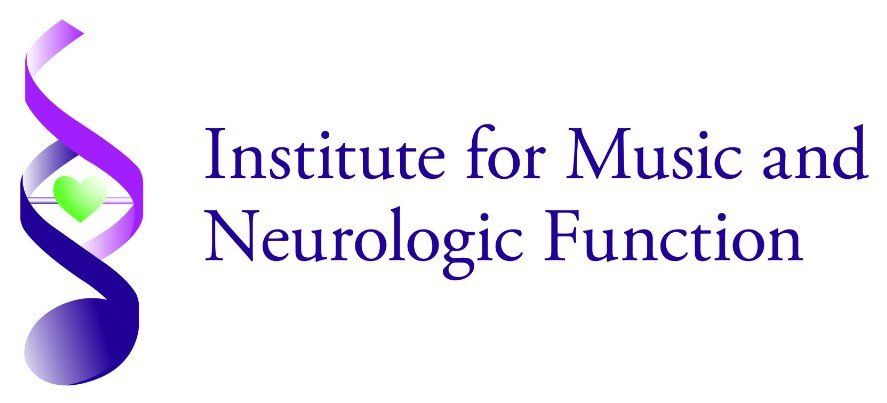Past Projects
Past Projects

Past Research Projects and Grants
The Institute for Music and Neurologic Function (IMNF) is dedicated to furthering the field of music therapy by conducting research projects to identify new and effective therapy methods.
Here are some of the IMNF’s completed research projects and grants:
• • •
Fan Fox & Leslie R. Samuels Foundation Grant
The Institute for Music and Neurologic Function has developed a study to look at medically complex people who are receiving in-home care. The study will examine whether or not music therapy will have an impact on overall healthcare costs, quality of life and quality of care for these patients. The theory is that patients undergoing music therapy will require fewer emergency room trips and less hospital care. Along with providing music therapy to the patients in the study, the IMNF will train caregivers with music-based tools. This will increase the exposure to the health benefits of music. The study began in January 2009 and will be completed in June, 2011.
The Effect of Active Music-Making Music Therapy on Depression and Apathy in Community-Based Day Heath Care Patients with Neurological Impairments
This study investigates the effect of individualized active music–making music therapy on depression and apathy in patients with neurological impairments. It will compare the effect of music therapy combined with routine psychological treatment, individually provided social visits with routine psychological treatment or routine psychological treatment alone. The findings of the study so far suggest that individualized active music-making therapy is an effective and low risk form of intervention for patients with neurological impairments who suffer from depression and lack of motivation, demonstrating positive implication for its use in heath care facilities for similar individuals. This study began in September 2008 and ended in September 2009.
For more information on research programs at the Institute for Music and Neurologic Function, please call 914-513-5292 or email imnf@wartburg.org.
Music/Neurologic Approaches to Improve Quality and Effectiveness in Stroke and Dementia Care
This study was designed to develop treatment criteria for older individuals with dementia. The IMNF worked with patients with varying levels and features of dementia in both individual and group therapy settings. In this protocol, special attention was given to the therapeutic use of music focused on desired neurological and behavioral outcomes. The goal of this study was to explore the effectiveness of using music as a therapeutic tool for patients with dementia to offer a working guideline that is applicable in a range of treatment settings. This study began in August 2002 and ended in October 2003. AOA Grant ID# 90 AM 2618.
Effective Evaluation for Persons with Non-Fluent Aphasia
This study was designed to evaluate and develop a treatment protocol with working guidelines for patients with non–fluent aphasia. Part of the study analysis focused on comparisons to experimental studies using cognitive-behavioral, electrophysiological and brain imaging techniques. This study began in October 2001 and ended in January 2003.
The Use of Familiar Songs and Rhythmic Speech-Motor Entrainment for Speech Improvement Among Patients with Non-Fluent Aphasia
This study examined the effectiveness of music therapy for speech improvement among patients with non-fluent aphasia. The focus of the study was on whether or not the use of familiar songs and rhythmic entrainment exercise can help increase speech production in non-fluent aphasic patients who have discontinued traditional speech therapy. The results suggest that the use of familiar songs and rhythmic speech-motor entrainment exercises appears to be effective in helping aphasic patients with expressive language. This study began in April 2007 and ended in March 2010.
Recovery of Functional Speech for Patients with Dysarthria through Combined Speech and Music Therapies
This study, funded in 1995-1996 with a grant from the Haym Salomon Foundation was designed to examine the specific ways rhythm and melody can be used within a combined music therapy/speech therapy group program to aid patients with dysarthria, a motor speech problem that makes verbal communication difficult. Many dysarthric patients, though able to learn intelligibility techniques, have problems in carry over and thus are not able to employ these techniques consistently. This project’s primary purpose was to build on these ideas while providing collaborative services of Speech Language Pathology and Music Therapy to benefit elderly patients who are dysarthric. Many dysarthric patients, though able to learn intelligibility techniques, have problems in carry-over and thus are not able to employ these techniques consistently. The primary goal of the study was to aid these patients to communicate effectively by providing support and reinforcement for carry-over of techniques for intelligibility through underlying tempo and melodies and enhancement of phrasing through music therapy. The program was comprised of one group session (1hr) 2x per week and an additional training session (approximately 15 minutes) per week for each participant in their first 4 weeks of participation. Patients were referred to the group after they had acquired techniques to improve intelligibility in individual speech therapy and were able to use them in stimulus-response activities and brief structured conversation in speech therapy sessions. The participants then took part in a music therapy group – co led by the SLP, for 1 hour per week for approximately 3 months. At the time of referral, a baseline of conversational intelligibility was assessed including consistency of application of techniques, self-monitoring, self-correction, cueing needed, and number and severity of (exchanges needed to repair) communication breakdowns. Assessment was updated at the end of the music therapy group intervention (approximately 3 months). The music therapist, along with the SLP, selected vocal and musical exercises that naturally supported and helped in the integration of the acquired response techniques. Specific rhythms were used to represent and reinforce the number of syllables as well as the pauses in each phrase. Two melodic phrases, based on familiar melodies known to the participants, were used to provide a framework for the spoken phrases. The findings show that participants improved from an average of 3 intelligible syllables to an average of 10 intelligible syllables
The Influence of Music on Memory in Persons with Dementia
Funded by the NY State DOH Dementia Grant programs (1993-1995), the purpose of this study was to answer the question of whether or not music therapy can positively affect the neurological and cognitive function of persons with dementia. Subjects were randomly selected for inclusion in either five- or six-person verbal reminiscence or music therapy intervention groups. Thirty-minute sessions were conducted three times per week for ten months. Towards the end of the study, subjects were measured against their own baseline scores on a battery of cognitive tests and standard mental status exams. EEGs were also administered and evaluated against recorded baselines.
The specific variables measured were attention, recognition, verbalization, EEG changes, functional status, behavior, depression, and cognitive status. To test these variables, the investigators used the following: EEG, Mini-Mental Status Exam, Cornell Scale for Depression in Dementia, Cohen-Mansfield Agitation Scale, Global Deterioration Scale, severe impairment battery, Brief Cognitive Rating Scale, and video analysis.
Of the significant findings, the investigators were not able to isolate a specific CNS localizing pattern, although global changes were evident. Interestingly, unfamiliar music had the greatest effect on altering patient’s EEG states and may have the greatest impact on an individual despite the well-documented benefits of using preferred and recognized music in the music therapy intervention.
Also of note, the music group as a whole improved from nodding responses to verbalizing recognition. Overall, more than half of the participants in the verbal and music groups improved in their scores on the mini-mental status exam, implying that there is the potential for improvement in patients with dementia.
The Effects of a Music Therapy Intervention on the Levels of Depression, Anxiety/Agitation, and Quality of Life Experienced by Individuals Diagnosed with Early and Middle Stage Dementias: A Controlled Study
In January 1997, the New York State Department of Health awarded Beth Abraham Health Services a grant to assess the effectiveness of music therapy as an intervention on levels of depression, anxiety/agitation, and quality of life in individuals diagnosed with Alzheimer’s and dementia.
The study consisted of a randomized experimental/control group using a pre/mid/post-test evaluation. Groups consisting of five members met for 45-minute sessions, three times a week, for four months. Individuals were used as their own controls. Participants were also compared to individuals who were not participating in music therapy interventions. Data was collected to measure agitation/anxiety, quality of life, adaptive daily living skills, and cognitive functioning.
As an overall outcome, this study found that a music therapy intervention could decrease the depression and anxiety of individuals with early and middle stage dementias who reside in long-term care nursing facilities. Specifically, the music therapy intervention produced statistically significant changes in behavior and affect of even the most challenging individuals studied (individuals diagnosed as depressed with at least one dementia). Behavior markers included conversation, smiling, sad affect, elation, flat affect, anxiety, singing/humming, verbal, and non-verbal variables as defined by the Music Therapy Assessment Tool (MTAT). All markers moved significantly in the appropriate directions.
An unexpected and interesting finding of this study was that although the music therapy groups and the non-music therapy groups decreased in levels of observed agitation, only the music therapy group decreased in the observed levels of agitation and depression while increasing in activities of daily living to a statistically significant extent. This complex interaction effect implies that although depression and anxiety are highly correlated, music therapy allows the decrease of both variables that in turn effect how one navigates their daily lives.
The Development of a Quality of Life Measure for Individuals with Late-Stage Alzheimer’s and Dementia
Funded by the DOH Dementia Grants in 1998. Quality of life is considered to be of the utmost importance when living in long-term care facilities. It is particularly important for those with Alzheimer’s and other dementias who may not have the ability to let their wishes be known. Based on previous studies conducted at this facility, it seemed that currently existing measures to assess quality of life focused primarily on negative behaviors, reflective of the disease process. Late stage Alzheimer’s and dementia demand a greater sensitivity of measure to ascertain a legitimate assessment of quality of life.
With this project the researchers sought to develop a way of measuring how people view the quality of life within a long-term facility. Two interventions were designed. The first intervention was an observational measure based upon the analysis of approximately thirty-six hours of verbal and music therapy session video filmed as part of an earlier DOH-funded study. The observational measure was then used with residents of CenterLight Health System to address the personal, individual behaviors reflective of quality of life.
The second intervention was the development and implementation of an environmental survey that was then administered to residents at three different facilities. A concept mapping procedure involving family members of residents with mid to late stage dementias, staff, and residents without dementia was used to develop the sixty-three-item environmental survey.
There are two major findings as a result of this study. The first is that it is possible to measure quality of life based on positive behaviors rather than negative ones. Negative behaviors will be part of a person’s life who is living with a degenerative disease such as Alzheimer’s or dementia. However, these individuals do exhibit positive behaviors that indicate the quality of life that they are experiencing at a particular facility.
Second, quality of life for individuals living in facilities cannot be measured without assessing the environment itself. The environment plays a crucial role in whether or not individuals are experiencing a good quality of life.
Music on their Minds: A Qualitative Study of the Effects of Using Familiar Music to Stimulate Preserved Memory Function in Persons with Dementia
This study was undertaken by C. Tomaino in partial fulfilment of her doctoral degree studies (1988 – 1998). The purpose of this study was to describe how music of strong personal importance to persons with dementia affects their responses within the music therapy process. In particular, the researcher sought to observe how responses to music by individuals with dementia could be indicative of preserved memory function.
Four residents were chosen for referral to this project. Each participant received individual music therapy two times per week for twenty-minute sessions. Participants were involved in a total of at least sixteen sessions. Music for the sessions was primarily selected from that named by the resident’s significant other in addition to various popular songs from when the participants were between the ages of twenty and thirty.
Session video was analyzed and coded to yield specific categories regarding memory function. This included the areas of self-identity, melodic memory, remembrance, word finding, familiarity, and spontaneous physical responses. Reoccurring throughout the sessions, expressions of personal needs emerged as topic themes. The observed themes included love, family, and loneliness.
There were many notable outcomes of this study in the above areas. Participants were able to improve their melodic memories and recall of lyrics over time. Also, an increased word-finding ability was documented. A specific familiarity was established between the residents and the therapist, which had a foundation in trust. Spontaneous physical responses (exclamations, crying, singing, clapping, smiling, eye contact, gestures) were found to be more prominent during songs that were more familiar to the participant. Speech improvements included the use of more appropriate words and, eventually, conversation to interact with the therapist.
Another important observation of this study was that the aggregate of fragmented and seemingly unrelated statements made by the participants over the course of the many sessions did convey coherent personal information. This finding was only made apparent through the extensive analysis of video spanning a long period of time. The expressed personal information implies that an understanding of self and personal needs still exists for an individual with Alzheimer's disease.
From 1994-1998 the IMNF provided funding and support for the following studies at the Department of Neuroscience at the Albert Einstein College of Medicine:
Enhancement of verbal memory through music: an ERP study, Michelle Dunn (PI) and Herbert Vaughan ( co-PI)
The Neurophysiologic Basis of Music Perception; Mitchell Steinschneider (PI), Joseph Arezzo (co-PI)
Research Supported by the Institute for Music and Neurologic Function at CenterLight Health System
Publications
Staecker, H., Kopke, R., Malgrange, B., Lefebvre, P. and Van De Water, T.R. NT-3 and/or BDNF therapy prevents loss of auditory neurons following loss of hair cells. Neuroreport, 7:4; 1-6, 1996.
Reser, D.H. and Van De Water, T.R. Implications of neurotrophin supported auditory neuron survival for maintenance of the tonotopic organization of the central auditory pathway. Acta Otolaryngol (Stockh) 117:239-243, 1997.
Abstracts
Steinschneider, M., Reser, D., Schroeder, C.E. and Arezzo, J.C. Physiological correlates for pitch encoding of click trains in primary auditory cortex (A1) of awake monkey. Society Neurosci. Abstract, 21:1; 669, 1995.
Kopke, R., Garcia, P., Feghali, J., Gabaizadeh, R., Liu, W., Staecker, H., Lefebvre, P.P and Van De Water, T.R. In vivo treatment with TGF∞/IGF-1/retinoic acid mixture increases hair cell regeneration/repair in guinea pigs utricles. Association for Research Otolaryngology Abstract, 1996.
Kopke, R., Staecker, H., Garcia, P., Feghali, J., Lefebvre, P.P and Van De Water, T.R. Rescue of auditory neurons through scala typani infusion of either NT-3 or BDNF after ototoxin/ ethacrynic acid destruction of hair cells in the guinea pig. Association for Research Otolaryngology Abstract, 1996.
Fishman, Y.I., Reser, D.H., Seto, S., Arezzo, J.C. and Steinschneider, M. Harmonic complex tones elicit responses defined by spectral composition rather than pitch in primary auditory cortex (A1) of the awake monkey. Soc. Neurosci Abstr., 22:2, 1623, 1996.
Reser, D.H., Fishman, Y.I., Arezzp, J.C. and Steinschneider, M. Physiological correlates of binaural click train frequency illusions in macaque auditory cortex. Soc Neurosci. Abstr., 22:2, 1625, 1996.
Steinschneider, M., Volkov, I, Reser, D., Ollendieck, M., Fishman, Y., Damasio, H., Arezzo, J. and Howard, M., III. Comparative analysis of complex souind encoding in auditory cortex of monkeys and humans. Soc. Neursci. Abstr., 22:2, 1623, 1996.
For more information on research programs at the Institute for Music and Neurologic Function, please call 914-513-5292 or email imnf@wartburg.org.
One Wartburg Place, Mount Vernon, NY 10552
• • •
Give Us A Call Today at 914-513-5292
WEBSITE DESIGN
BY HEARST MEDIA SERVICES, ALL RIGHTS RESERVED © 2017


